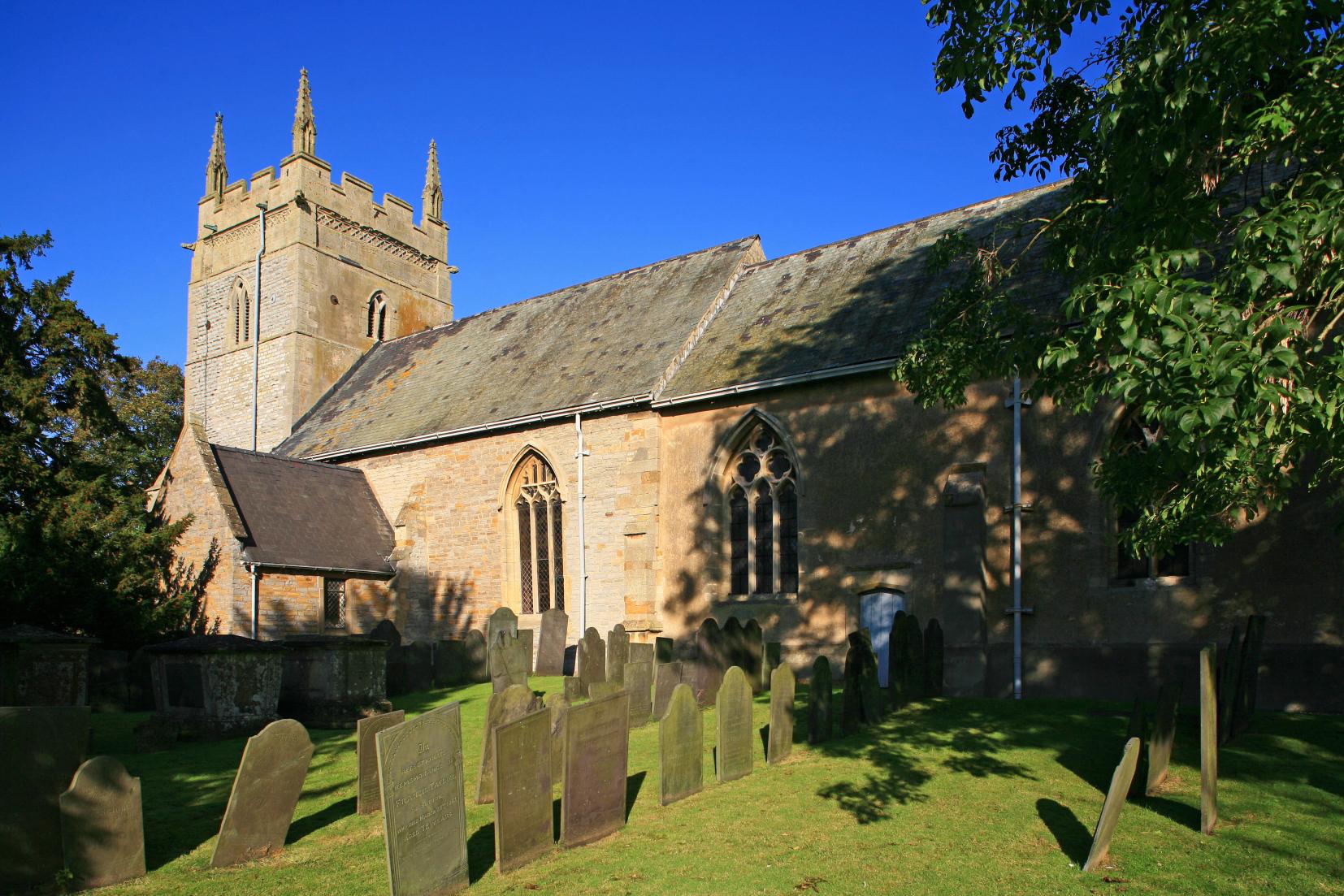St Mary
Barnstone, Nottinghamshire
A small stone church, St Mary's stands alone on the main road into the village.

A centrally situated village church.
Granby, Nottinghamshire
The church sits on a pre conquest site, it has been reduced in size and restored around 1777 and again in 1888.
A deep frieze with an ornamental band, crenellated parapet with gargoyles and corner pinnacles forms the Perpendicular top stage of the tower.
Within the 1958 south porch is a 13th century Early English heavily moulded doorway. The double chamfered tower arch, circa 1250, has circular responds with moulded capitals, and the double chamfered 13th century chancel arch has octagonal responds. The nave roof is arch braced with big moulded tie beams.
Two piscinas and an aumbry on the south side. The 19th century font is apparently using an inverted 14th century font as a pedestal. Octagonal oak panelled pulpit dated 1629.
There are poppyhead bench ends with details of animals, reptiles, grotesque heads and one with a merman and a mermaid.
The churchyard, which closed in 1897, contains a listed War Memorial.
Barnstone, Nottinghamshire
A small stone church, St Mary's stands alone on the main road into the village.
Plungar, Nottinghamshire
St Helen’s is a 14th century church (Grade II* listed) at the centre of the small village of Plungar in the Vale of Belvoir.
Aslockton, Nottinghamshire
The church was designed by Sir Reginald Blomfield and built between 1890 and 1892.